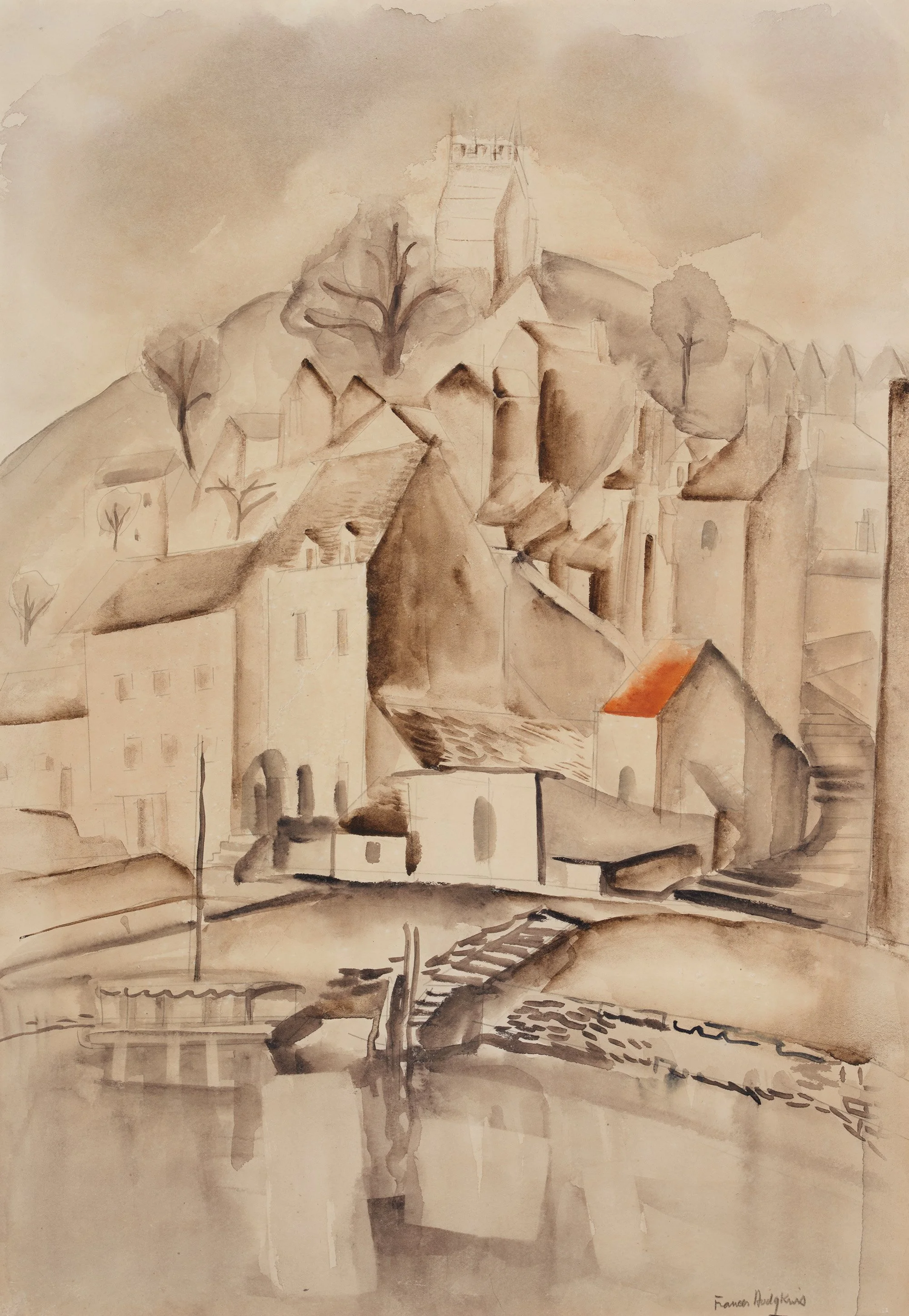Frances Hodgkins
Bridgnorth c. 1926
Pencil, ink, watercolour & wash on card, 50 x 35.5 cm
Signed Frances Hodgkins lower right
Sold
From Frances Hodgkins to Isabel Field, 3rd December 1926, Manchester
“I have been very busy. I opened a Show of my Paintings on the 4th Nov and yesterday it closed. It has been a success – in spite of the badness of the times & the foulness of the weather … I have had a good & friendly reception – sold over £100 worth – which is considered good for Manchester where there is no great picture buying public as in London … With the proceeds – and greatly helped by the big advertisement & publicity – I am starting a Studio in Town and begin my Painting Classes (night & day ones) at the New Year. “
Surmounting the High Town of Bridgnorth stands the ruins of Bridgnorth Castle, begun in the 12th century by Robert de Belleme, Earl of Shrewsbury. Today, it leans at a perilous angle, a beloved folly standing in the midst of Victorian gardens. One of the reasons Frances Hodgkins delighted in Bridgnorth (she taught there over several summers between 1926 and 1932) was the variety of views and combinations of architectural and natural forms that were readily available. This work stems from her first visit in 1926, a momentous year marked by the loss of her mother in April, a rite of passage that filled her with grief, but also set her free from the ongoing guilt of not following society’s expectations of the unmarried and dutiful daughter. Now she was free to follow her own course, and creatively she returned to the memories of France that influenced her most adventurous and confident compositions. Having spent a brief time in Ludlow, she moved to Bridgnorth, a relatively short journey, but one that proved a turning point in her painting.
When Royal Academy President E J Poynter painted a similar view in 1885, he had emphasized architectural detail – every brick on each building carefully delineated, a half-timbered cottage standing out in the foreground, smoke curling up from numerous chimneys; boys on the river plying their skiffs, and the steep path leading up to the upper town, the tower of the ruined castle standing out on the skyline.
While Hodgkins has painted her watercolour from a similar vantage point, hers is a modernist approach, simplifying the forms, their blank facades stacked side by side like elongated building blocks that might equally represent buildings depicted during her time in St Paul du Var in the south of France or Montreuil-sur-Mer in 1924. The tower looms in a comparable manner, but it is perhaps her treatment of the reflections on the water that is a real point of difference. Poynter’s foreground appears almost cluttered with reflections, whereas Hodgkins creates a mood mysterious.
In November 1926 she had an extremely successful one-person exhibition at 2 Mount Street, Manchester, among which were three works entitled Bridgnorth. The second example included here seems to have zoomed in, removing the river and the castle, instead focusing on the layers of buildings, and the horizontal effects of different sets of steps. The third composition remains unidentified at this point. Manchester critic O Raymond Drey wrote in the introduction to the show’s catalogue that “she makes each stroke of her brush instinct with life.”
_
Written by Mary Kisler
Exhibited
Manchester, 2 Mount Street, Frances Hodgkins, 4-30 November 1926, No.47/48
Literature
Roger Collins and Iain Buchanan, Frances Hodgkins on Display 1890 – 1950 (Hocken Library 2000) p. 59
Reference
Frances Hodgkins Database FH1321
(completefranceshodgkins.com)
Provenance
Private Collection, U.K.

